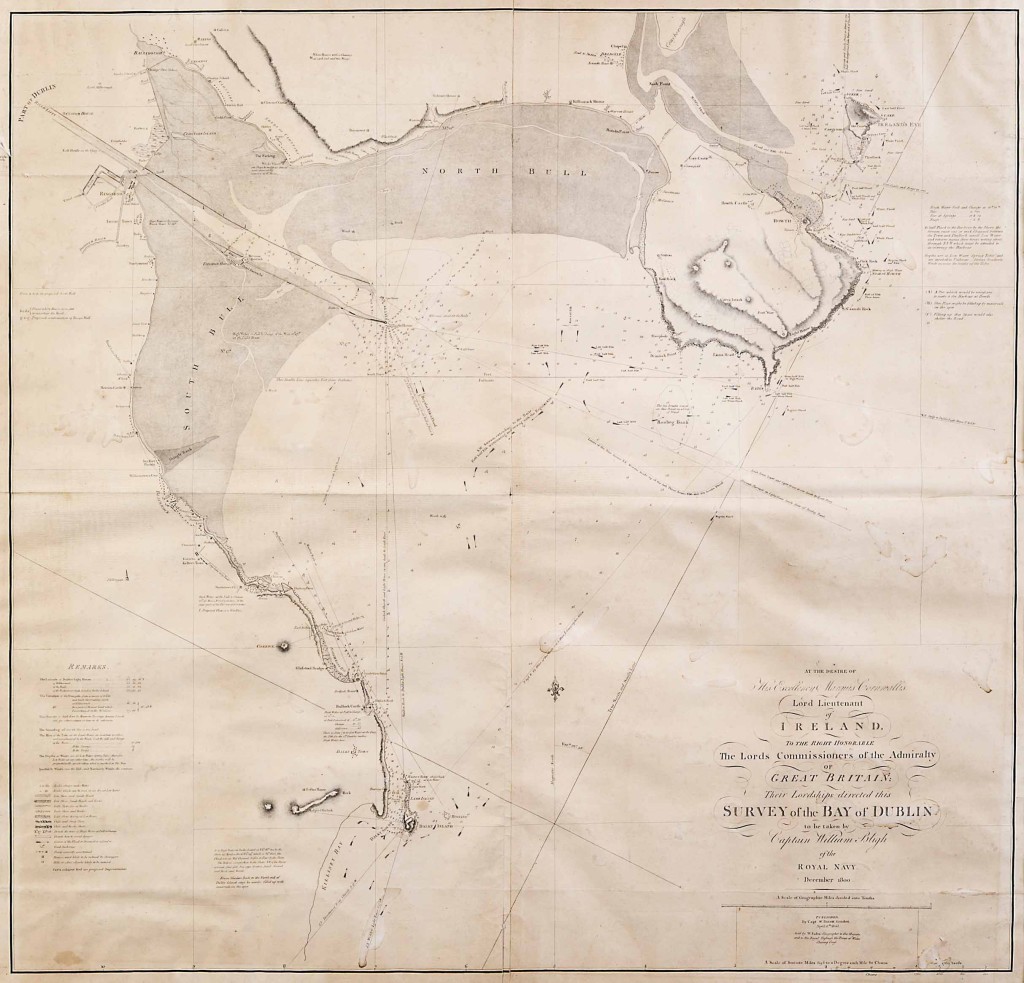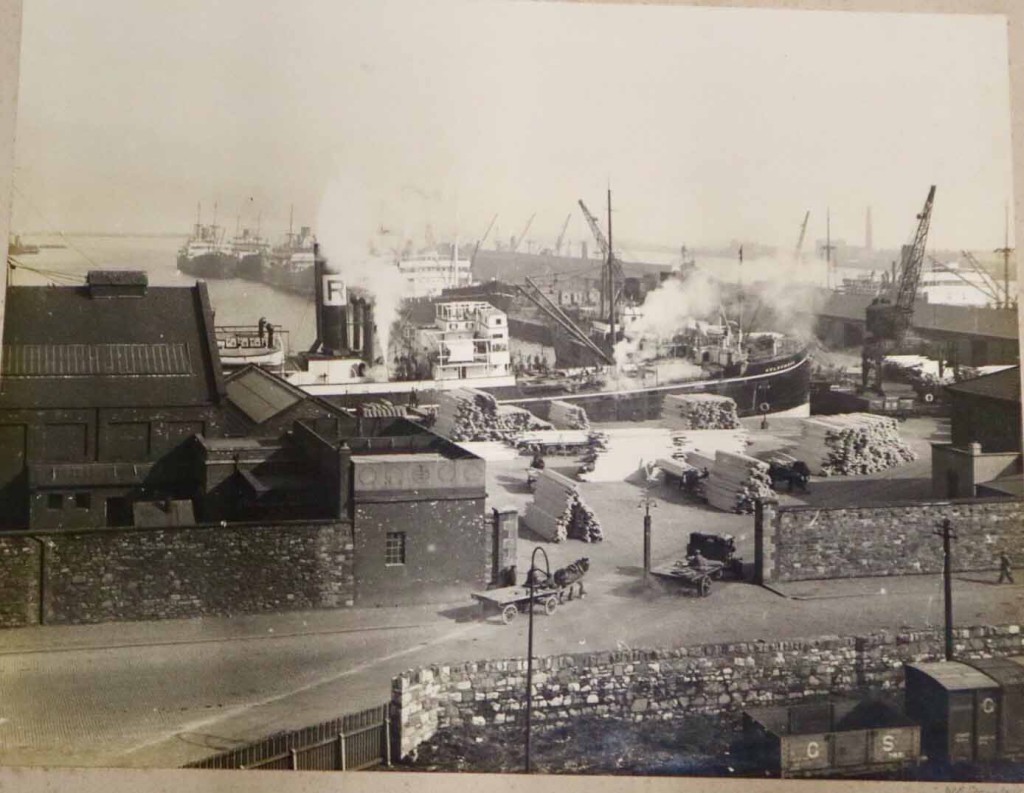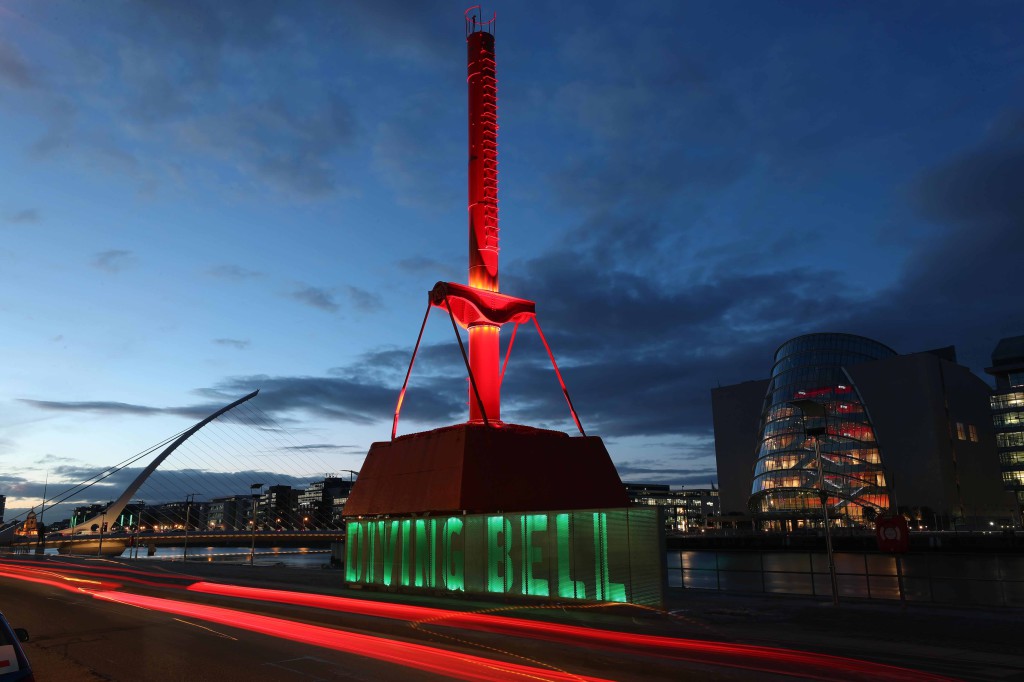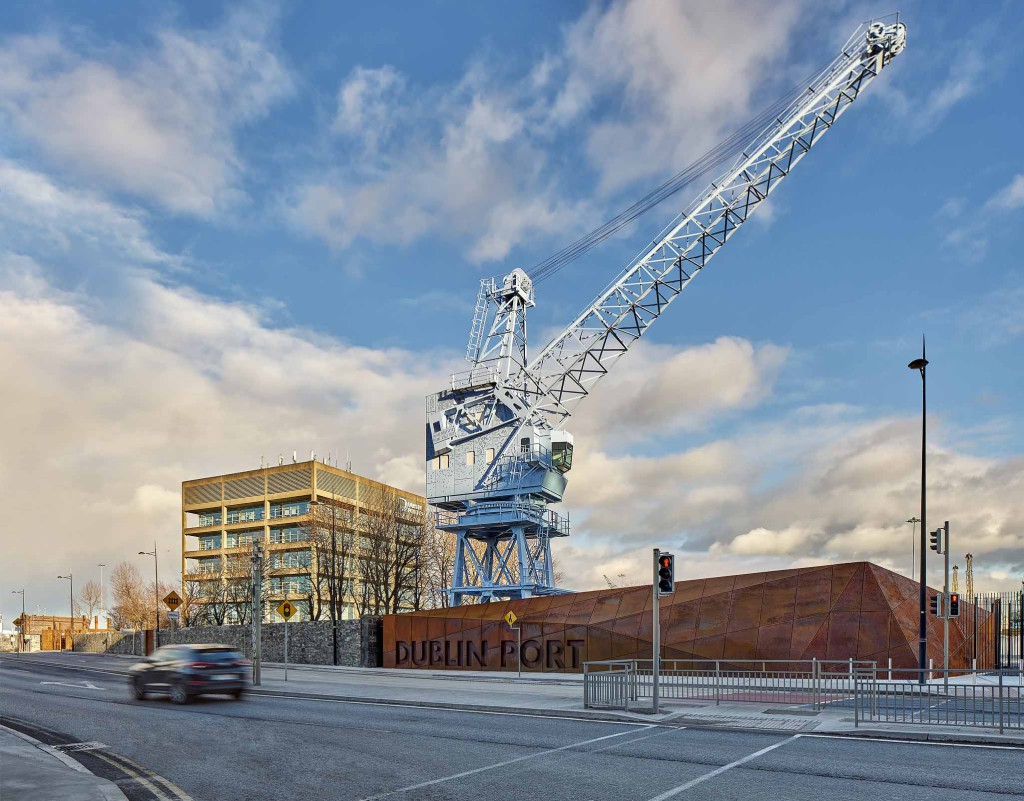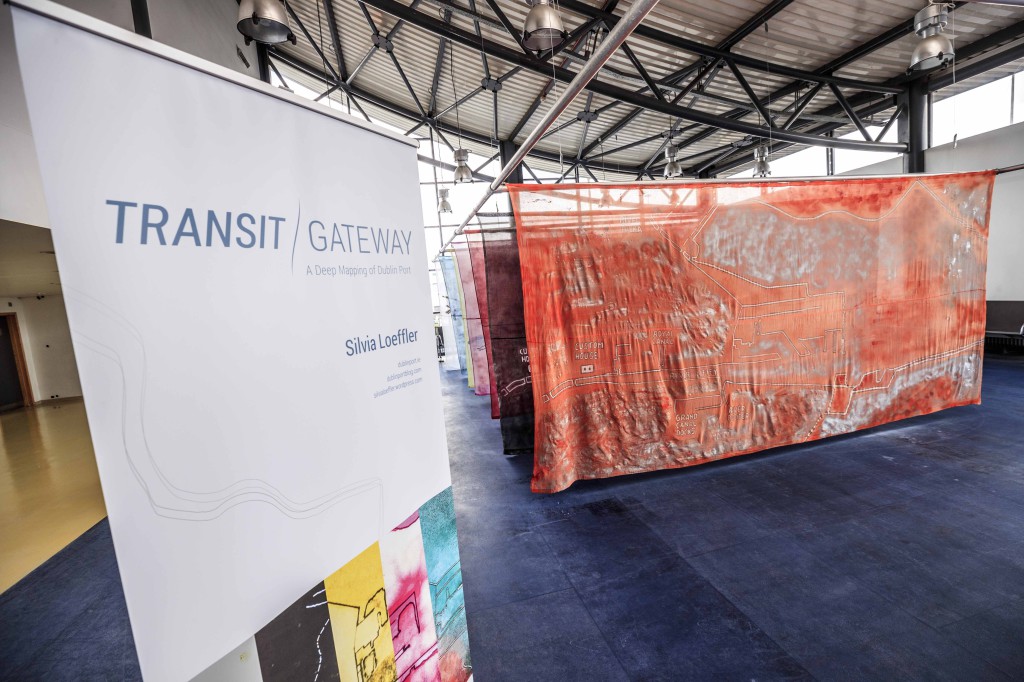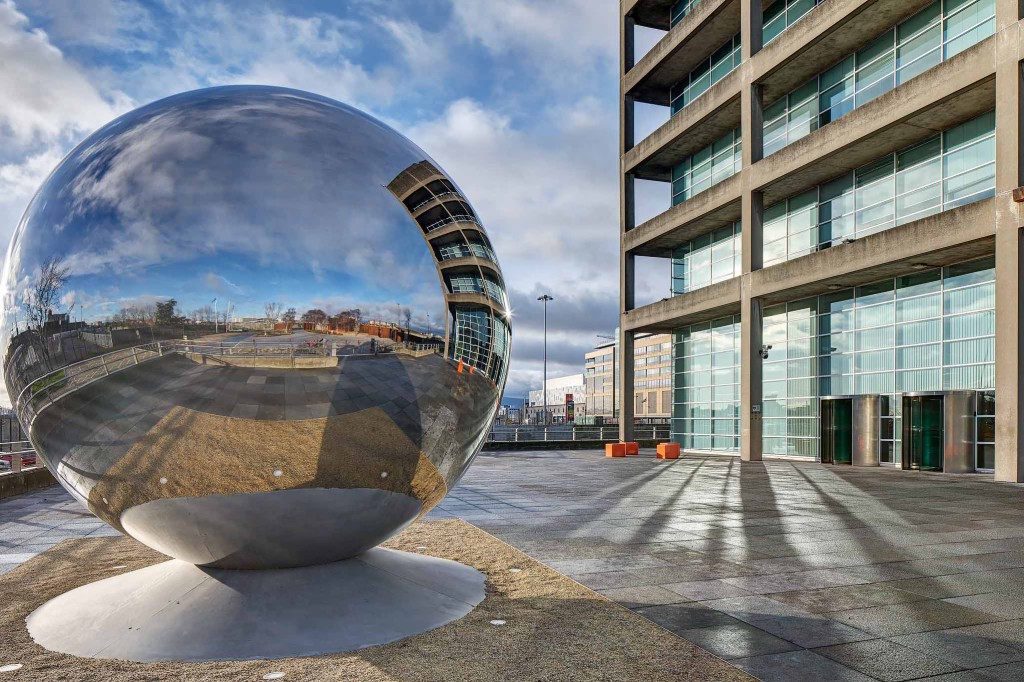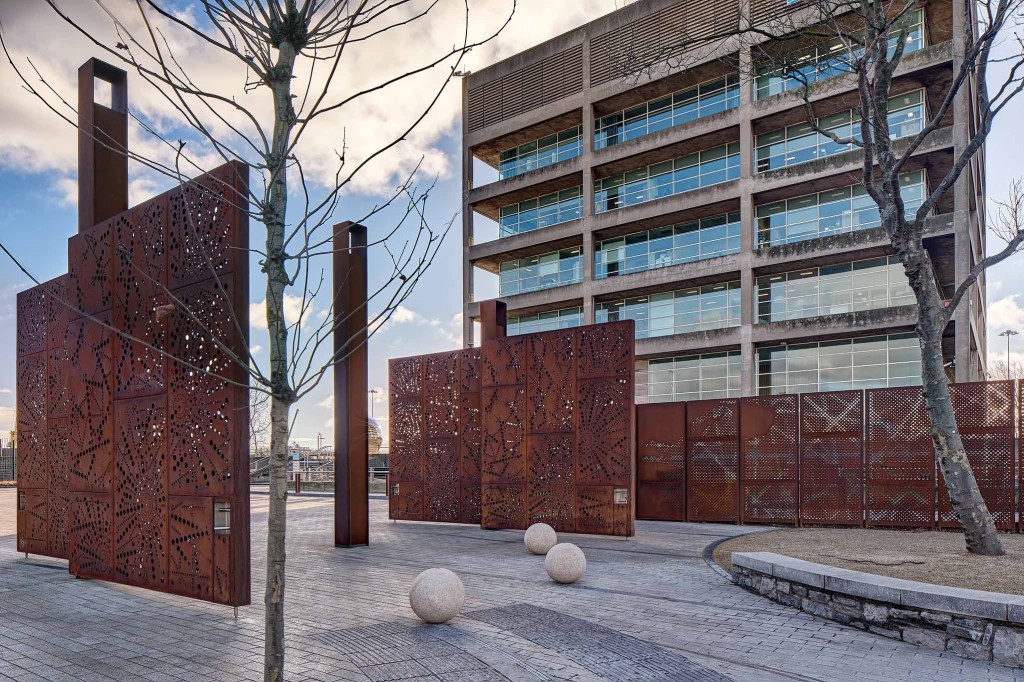Harry Gilligan’s “History of the Port of Dublin [1]” published in 1988 is a well-researched and most informative book on the history and development of Dublin Port over the last 1000 years. In the book he describes that Dublin was little more than a monastic settlement until the Viking invasion in the 8th and 9th Centuries, when they selected the Liffey Estuary as their point of entry to the country as it provided relatively easy access to the central plains of Ireland.
Trading with England and Europe followed which required port facilities so the development of Dublin Port is inextricably linked to the development of Dublin City. The first boats using the port had shallow drafts and pulled up to the bank. Around 1300, the first stone quay walls were erected on Wood Quay and Merchant Quay in more or less the same line as the present quay walls.
Up until 1706 the city fathers conducted the port affairs as a department in the corporation and in that year they established the Dublin Corporation (Ballast committee) as a separate entity to manage the port. At this time Ballast was needed on sailing ships when they were not full of cargo and many ship captains dumped excess ballast into the river causing blockages. In 1786 many Dublin merchants were dissatisfied with the running of the port, and control of the port was transferred from Dublin Corporation to a new authority the Ballast Board which was controlled by merchants and property owners. In 1867 the Ballast Board was replaced by the Dublin Port and Docks Board and since 1997 the day to day running of Dublin Port is managed by Dublin Port Company (DPC) which traces its 300 year old history back to 1706.
Building the Modern Port
In 17th Century Dublin Bay presented major dangers for shipping. In 1674 it was described as in its natural state, “wild, open and exposed to every wind”. Ships frequently had to seek shelter at two small sea side villages Clontarf to the north or at Ringsend on the south of the city. In certain wind conditions ships could not reach the city for several weeks at a time and shipwrecks were common. So in 1716 work began on a bank to protect the south side of the channel at the mouth of the harbour, running from Ringsend to Poolbeg. The South bank provided only limited protection for shipping and in 1753, after a particularly stormy winter, the bank was replaced with a wall – the South Bull Wall. A Bull is another word for strand, and the strands on either side of the mouth of the Liffey were known as North and South Bulls. The Poolbeg Lighthouse at the end of the Bull Wall was lit for the first time on 29 September 1767.
In 1800 a major survey of Dublin Bay by Captain William Bligh, who is remembered for his role in the mutiny on the HMS Bounty, recommended that the North Bull Wall should be constructed, parallel to the South Bull Wall to prevent sand building up in the mouth of the harbour. He correctly forecast that this would create a natural scouring action that would deepen the river channel. When the North Bull Wall was completed sand gradually accumulated along its side until an Island emerged called Bull Island now a nature reserve, beach and part of the Dublin Bay UNESCO designated biosphere. Two hundred years later both walls are still providing the function of keeping the modern Port open while the South Wall is now protected structure, acknowledging its importance as 18th Century structure.
Capt Bligh’s Map.
The development of the Port
Throughout the 19th Century the Port developed eastwards developing the quays and building various bridges. The first big move was when the new Custom House opened in the 1790s. A bespoke headquarters office was built for the Port nearby on 19-21 Westmoreland Street. Though the building itself was not distinctive in design, it formed part of an elegant streetscape framing a view to Trinity College and the Irish Parliament Building (now Bank of Ireland). What made the building famous and distinctive was the ‘Ballast Office Clock’ mounted over the front door. In 1870 the clock was connected by telegraph wire to Dunsink Observatory making this the most accurate public clock in Dublin at the time. It became established as a popular rendezvous point for people – “Meet you under the Ballast Office Clock” was a well-known refrain in Dublin.
Five years after the opening of the Custom House a purpose built dock began operating in 1796 and in 1821 it was supplemented by George’s Dock. From 1836 construction work began on deep-water berths at the North Wall and this was extended in the 1870s. Further deep-water berths, in the Alexandra Basin opened shortly before World War I and Ocean Pier, to the south-east of Alexandra Basin was completed after World War II. The 1950s brought the first roll-on, roll-off services, and container traffic has increasingly dominated port business since the 1960s while the older parts of the port could not service these larger modern ships and this area has now become the heart of the financial district in Dublin.
Alexandra Basin, 1920’s.
The Modern Port and the 2040 Masterplan
Today Dublin Port Company Head office is located in the heart of Dublin Port on Alexandra Road. DPC a self-financing, private limited company wholly-owned by the State, whose business is to manage Dublin Port, Ireland’s premier port. Established as a corporate entity in 1997, DPC is responsible for the management, control, operation and development of the port. DPC provides, services, accommodation and lands in the harbour for ships, goods and passengers. Until 2010 the Port followed a traditional approach of expanding through the reclamation however this was stopped after a 30 year legal battle over planning permission which the Port lost.
In 2012 the DPC set out a Masterplan (2012 – 2040) [2] which aimed to improve capacity of the port and focus on reintegrating with Dublin City through a CSR projects and focusing on the Ports Archive and Heritage infrastructure. Within the 300 year old archive there is a vast collection with:
- Paper material covering the period from 1790 to 1960s.
- 60 Charts and Map of various periods.
- 18,000 photographs. From 1861 to 1990.
- 3,300 slides. From 1955 to 1995.
- 950 Bound Registers.
- 30,000 Engineers Drawings.
- Miscellaneous artefacts such as a diving helmet and sextants etc.
A website has been created to highlight this collection and the cataloguing of it is on-going and the scanning of the national important engineering drawings will begin this year [3].
Tangible Soft Values & Port Heritage Projects
More recently the Dublin Port Company has developed a series of heritage projects including the restoration of a 19th century Diving Bell in 2015 and the opening up of the area around Dublin Port headquarters in 2017. The 90 ton Diving Bell dates from 1871 and was designed by the then Dublin Port Engineer Bindon Blood Stoney. A Diving Bell is open at the bottom and allows six workmen to descend down a funnel through an airlock to work on the river bed. The bell was lowered into the water from a Bell Float or Barge and air was pumped into it to make this happen. The workmen were able to level the river bed to make way for large prefabricated concrete blocks, each weighing up to 350 tons. This innovative approach to quay wall construction was a relatively cheap way for Dublin Port to expand and move eastwards away from the City Centre.
The Diving Bell, 2015.
The Bell was in use until 1958 and was placed on display in 2003 as part of community project on Sir Rogersons Quay. DPC decided to create a more permanent display raising the Diving Bell off the ground and building a small museum underneath which opened in 2015. As Frank McNally of the Irish Times described it at the time ”And now suddenly, its Dublin newest museum – a miniature one, to be sure, but packing more fascination per square metre than most others” [4]. This popular museum receives 105,000 visitors each year.
In October 2016 DPC announced details of a new project to soften its boundaries to the City and provide public realm at Port Centre for the first time in 35 years. This so far has been the largest physical intervention by Dublin Port to reintegrate the Port with the City, as committed to in the company’s 2040 Masterplan. The original Port Centre had been built by Scott Tallon Walker and opened in 1981. The aim of the project was to significantly soften and enliven the Port’s boundaries with the City creating new public spaces, a maritime-inspired garden, architectural design and the reinstallation of a 1957 heritage crane. It was opened in October 2017 by the Irish Taoiseach (prime minister) Leo Varadkar.
The new Dublin Port Centre, 2017.
Port Perspectives Engagement Programme
To complement the aims of the Masterplan for Dublin Port (2012-2040) a “Soft values project – strategic framework” was published in September 2012 setting out a series of projects. Dublin Port Company’s Soft Values Programme is a multi-faceted plan, from arts to architecture, history to folklore aimed at integrating Dublin Port with Dublin City and its people. This re-integration as mentioned earlier is a core aim of the Masterplan and it is something Dublin Port Company takes very seriously, to the point where it underpins both how Dublin Port Company operates its current business and any development proposals envisaged under the Masterplan.
Under the Port Perspectives Engagement Programme the company has supported a variety of artists and exciting projects. In 2016 DPC sponsored an exhibition of the work by the Belgian artist Eugeen Van Mieghem at the Hugh Lane Gallery and commissioned three artists to create site-specific public artworks in response to the theme of Dublin Ports relationship with the city, these were: Sheelagh Broderick “Port Walks”, Silvia Loeffler “Gateway: A deep mapping of Dublin Port” [5] and WEMI & Cliona Harmey “Port/River/City”. In the same year DPC worked with twelve of Irelands leading songwriters to compose and perform songs based on the same theme, the symbiotic relationship between the Port and City. Curated by Irish songwriter Paul Noonan and Gary Sheehan of the National Concert Hall the songs were performed there over two nights in June 2016 and more recently this has been turned into a film called “Starboard Home” directed by Rob Davis, Elton Mullally and Moira Sweeney.
Transit Gateway, as part of “Port Perspectives”, is an artistic mapping, that shows the changing connections of the city and port of Dublin throughout the years, displayed in the Terminal 1 Building (Silvia Loeffler, 2017).
Looking to the Future
In 2018 the Port Heritage and Communication’s team was created to implement the keys aims of the Masterplan 2012-2040 and this new team are involved in a variety of Corporate Social Responsibility and Heritage projects. An essential part of all these projects is communicating with the communities around the Port and we do this through an active outreach programme. Good examples of this include the following.
For many years the Port was responsible for outlining Ports along the east coast of Ireland; including Skerries, Balbriggan, Sandycove and Bullock. DPC is still responsible for Bullock Harbour and this year is voiced with the local community to celebrate the 200th Anniversary of the building of the harbour in 2019 through a lecture series and exhibition. At the same time Ireland is involved in 10 years of commemoration from 2012-2022 to celebrate the foundation of the modern state which did not happen under the easiest of circumstances. The Irish people from 1914 to 1922 endured ten years of intense military activity, World War One, an urban insurrection, a Guerrilla War and finally a bitter Civil War. The Result was a new nation bearing both the hopes of many of its citizens, and the pain left by the wars that had brought it into being. Dublin Port and its staff of course were involved in particular during the 1913 Lockout, World War One, 1914-1918 and the War of Independence. 1919-21. Regular history lectures and seminars are held to tell people about those links with the Port while we have a very active YouTube channel with screens short films about the Ports history.
The new Dublin Port Centre, 2017.
In December 2018 the Port Heritage and Communication’s team tendered for an architect design team to create and develop a Masterplan for the Odlum’s Cultural Quarter. This is an area within the Port consisting of a historical flour mill and silo buildings over 1.37 hectares which will become central to the future heritage plans for the Port, including a link to a 4.2 greenway along the edge of the Port. So the next few years will be very busy.
Notes
[1] Gilligan, H (1988), History of the Port of Dublin, Gill & Macmillan, Dublin.
[2] https://www.dublinport.ie/masterplan/masterplan-2040-reviewed-2018/
[3] https://dublinportarchive.com
[4] Mc NcNally, F, (4th September 2015) “An Irishman’s Diary about the new life of the Dublin Port Diving Bell”, Irish Times.
Head Image: Odlum’s Building, c 1955.
